The Swishwash Island bioblitz
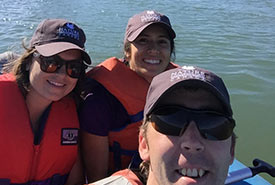
L-R: Shannon, Robin and Dave (Photo courtesy of BCIT students)
We are three students in our final year of the fish, wildlife and recreation program at the British Columbia Institute of Technology. We were excited to choose Swishwash Island for our final research project because it gave us the opportunity to...
Himalayan blackberry and English holly and Japanese knotweed…oh my!
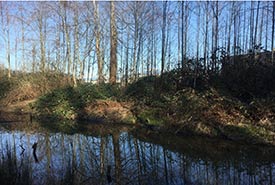
East bank of Centre Creek overrun by dense Himalayan blackberry (Photo by Lynn Pinnell)
As part of my bachelor’s degree at the University of British Columbia, I had the honour of doing an independent research project with the Nature Conservancy of Canada (NCC). For the project, I mapped all occurrences of invasive species at...
Manitoba's mystery stonefly
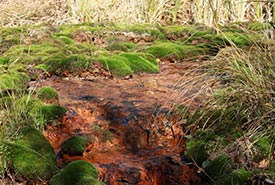
An example of a classic spring. Tufa spring, Fort Ellice, MB (Photo by NCC)
Everyone enjoys a good mystery, even entomologists. During my early years of teaching a course in aquatic entomology at the University of Manitoba, the name Capnia manitoba kept appearing in the list of stoneflies in the province. It was a...
Getting my feet wet with field work (literally)
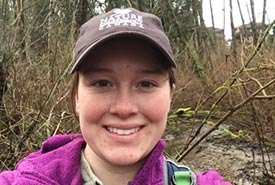
Excited to be in the field (Photo by Lynn Pinnell)
As university students, we learn the theory behind conservation and read journal articles about the findings of studies that took place out in the field, but rarely do we get the chance to participate in real field work. I feel incredibly lucky...
Buzzing down the house: Determining the habitat for declining bumble bees
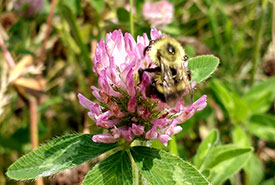
Bumble bee foraging on red clover (Photo by Amanda Liczner)
Bumble bees are important pollinators of crop plants and wild plants. Unfortunately, bumble bee species are declining globally. These declines are likely due to several factors, including climate change, a pathogen spread from imported bees,...
Identifying bats by their distinctive voices
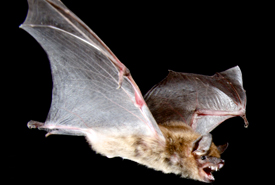
Big brown bat (Photo by Brock Fenton)
Having studied bats for more than a decade, I have been fortunate to be able talk to students in their classrooms while doing bat presentations, or to landowners while I trapped bats on their properties. Everyone has a bat story. Everyone loves...
Poweshiek winter wonderland
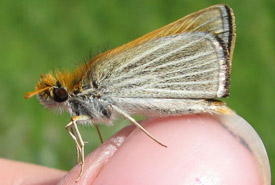
Poweshiek skipperling (Photo by Jaimee Dupont/NCC staff)
Forget about crocuses and birds — the first sure sign of spring on the prairies is when the insects start to fly around. Have you ever wondered what happens to the insects in the winter? A few, like the monarch, fly south with the birds, but...
What a difference a year makes
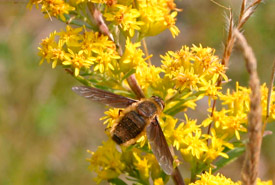
The summer-blooming showy goldenrod, being visited by a bee fly, was less abundant than the spring-blooming flowers. (Photo by Diana Robson)
One of the first papers on pollination I tried to publish was rejected because it contained data from only one field season. I withdrew the paper, and did another year of research. Why is having two years of data so important, you may ask?...
Hope, the gray ratsnake
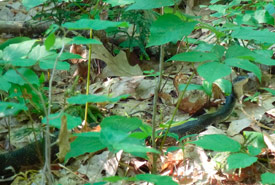
Hope, the gray ratsnake (Photo by NCC)
This summer, I had the opportunity to go out with Nature Conservancy of Canada (NCC) field staff and reptile biologists from partner organizations to track a gray ratsnake dotingly named Hope, to which we'd previously attached a radio tracking...
Nature through the eyes of young Canadians
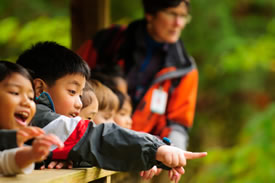
Students from John Norquay Public School, Nature Days Vancouver (Photo by HSBC Bank Canada)
When I set out to research young Canadians’ views of nature and their childhood experiences within nature, I had no idea that the results would be only the beginning of a larger conversation about the difference between attitude and...

